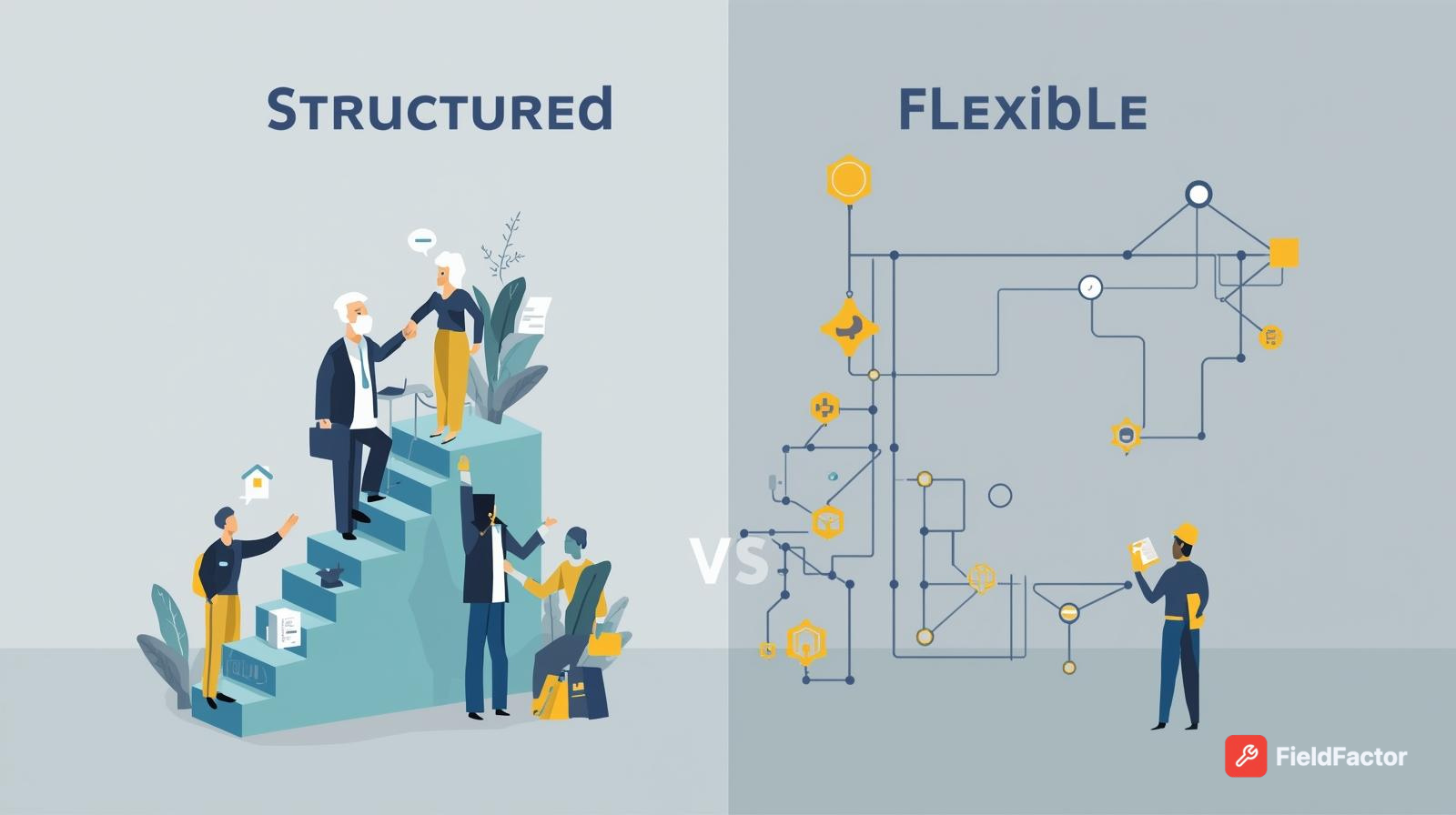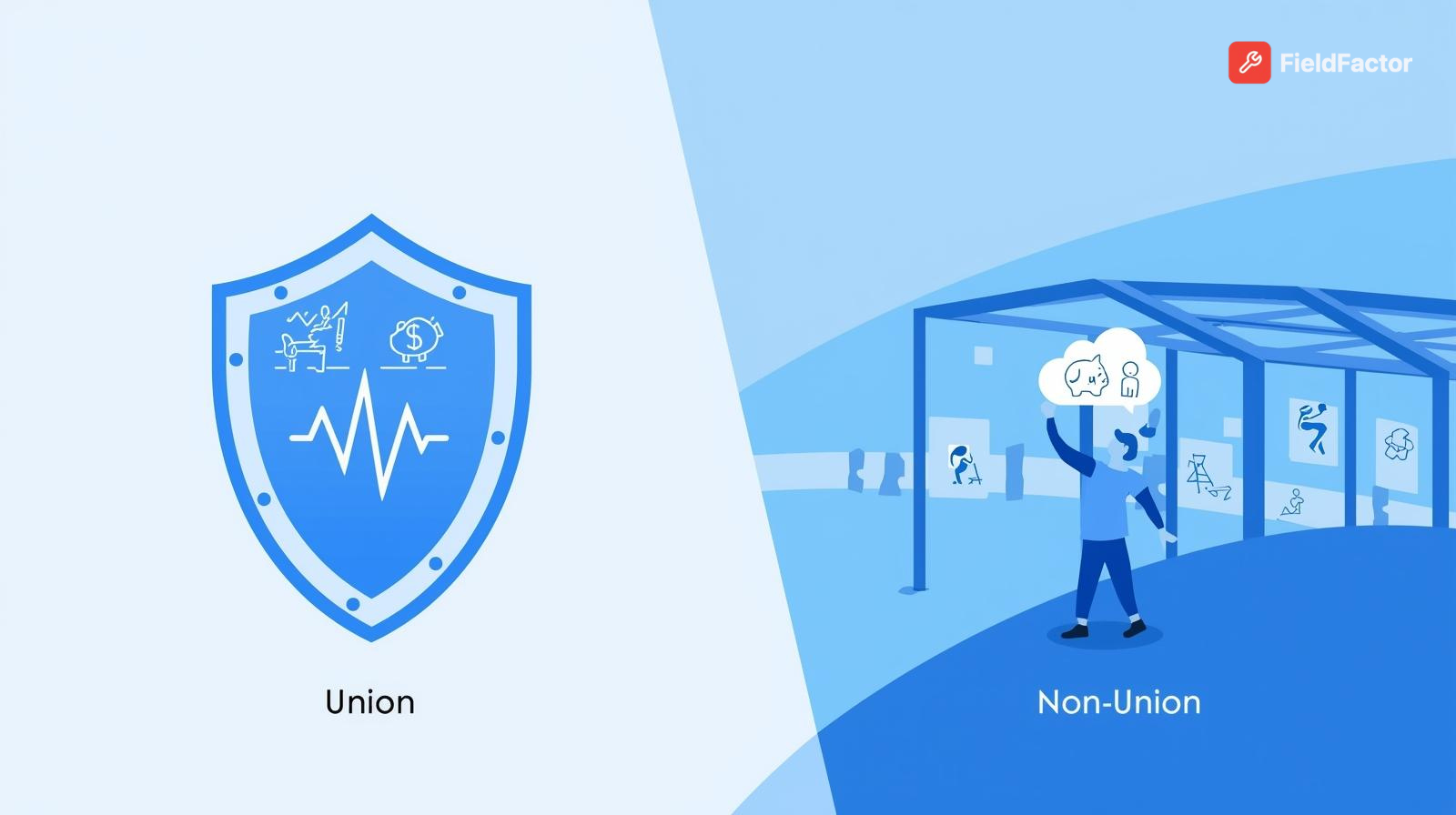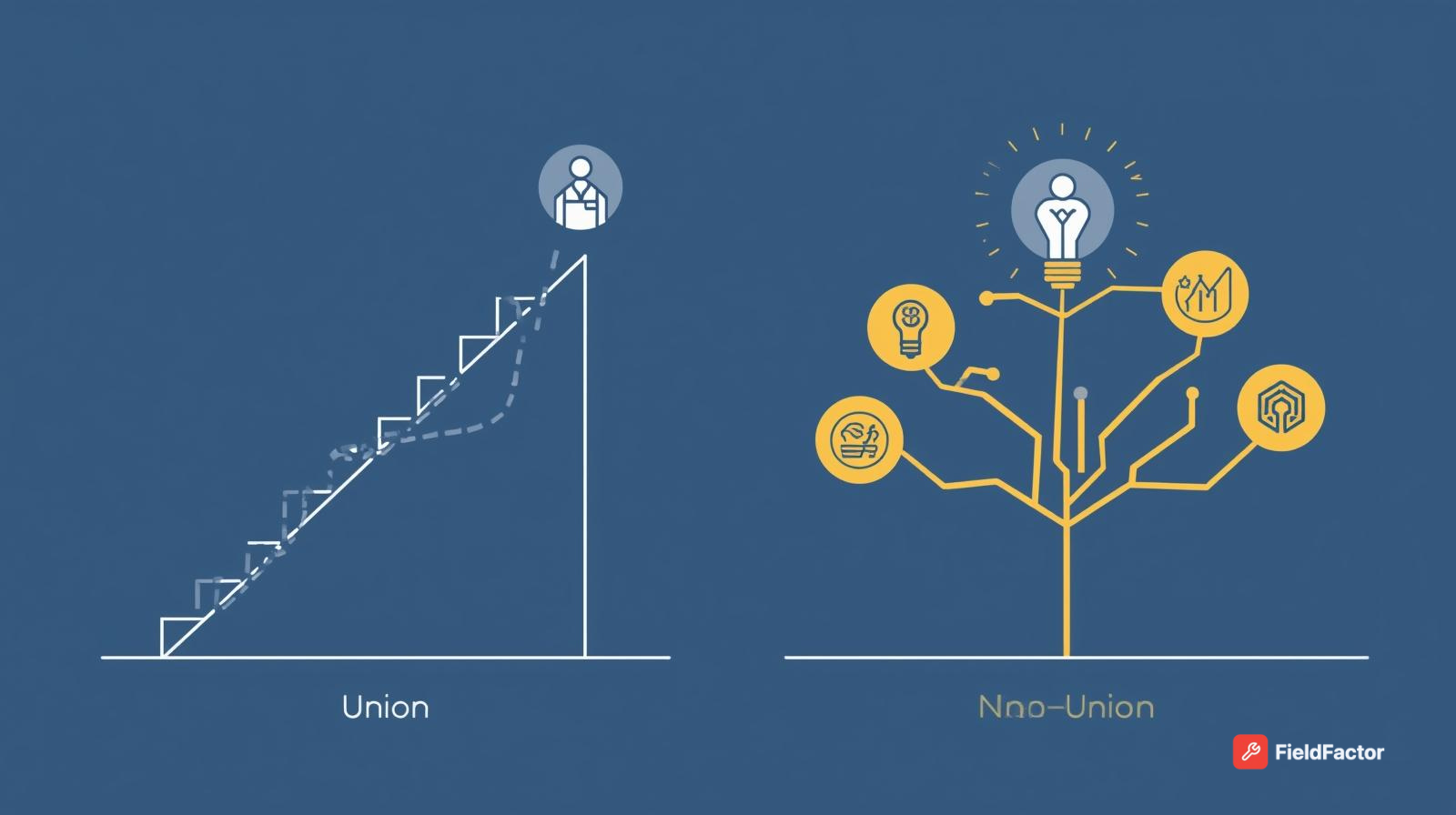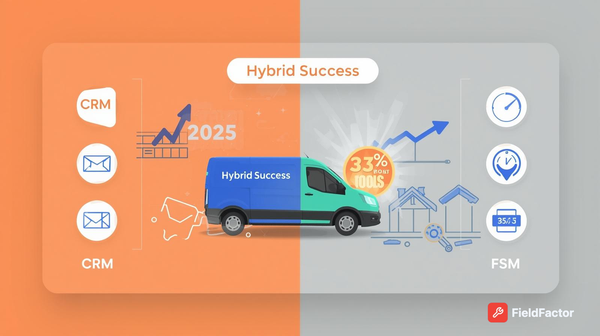Union vs. Non-Union HVAC Technician Careers: The Ultimate 2025 Deep Dive
Union vs. Non-Union HVAC Techs: Who earns more in 2025? Get the ultimate deep dive on salary, benefits, job security, and apprenticeship differences. Use our data to choose your path: stability vs. high ceiling.

The HVAC industry is booming, with the U.S. market projected to reach $228.74 billion by 2030 at a 5.5% CAGR, driven by energy efficiency mandates, data center expansions, and climate retrofits. Yet, a persistent labor shortage—estimated at 110,000 technicians by 2025—means skilled workers hold the cards. For aspiring or current techs, the union vs. non-union debate is pivotal: Unions like the United Association (UA) offer structured paths and protections, while non-union roles promise flexibility and entrepreneurship. This 2025 guide—drawing from BLS data, industry reports, real tech stories, and expert analyses—dissects every angle: training, pay, benefits, security, balance, advancement, regions, and future trends. Whether you're eyeing apprenticeships or a career switch, arm yourself to choose wisely in a field adding 40,100 jobs annually through 2034 (8% growth, faster than average).
We'll compare head-to-head, highlight trade-offs, and share unfiltered insights from the field. Bottom line: Unions suit stability-seekers; non-union fits ambitious independents. Let's break it down.
Entry and Training: Apprenticeships and Skill-Building Paths

Entry into HVAC requires a postsecondary certificate (6-24 months) or high school vocational courses, plus EPA 608 certification for refrigerants. But union and non-union diverge sharply in structure, duration, and outcomes.
Union Training: Structured, Paid Apprenticeships
UA-affiliated programs (e.g., UA Local 100) blend 144+ hours/year classroom instruction with 2,000+ on-the-job hours, spanning 3-5 years for journeyman status. Paid from day one (starting 40-60% of journeyman wage, ~$20-25/hr), they cover safety, blueprinting, and advanced systems like VRF. Recent NABTU/ICERES studies from 2019-2023 highlight union programs' edge in diversity: Joint labor-management apprenticeships account for roughly 75% of all construction apprenticeship registrations and feature a greater proportion of women, Black, and Hispanic apprentices than non-joint (non-union) programs—for instance, women comprised 4.8% of union registrations vs. 2.4% in non-union in 2019. In 2025, UA emphasizes green tech (e.g., heat pumps), with 90% placement rates post-grad.
Pros: Comprehensive (OSHA/NATE integrated), portable credentials, mentorship from journeymen.
Cons: Competitive entry (interviews, aptitude tests), potential "bench time" (paid downtime between jobs, but location-locked).
Non-Union Training: Flexible, Employer-Led Programs
Non-union paths via trade schools (e.g., ACCA partners like Dallas College) or company apprenticeships last 1-3 years, often unpaid or low-paid initially ($15-20/hr). Focus: Hands-on via employers, with self-funded certs (NATE ~$200/exam). ACCA's 2025 resources push online modules for flexibility, but quality varies by firm.
Pros: Faster entry (6-12 months to field work), location choice, quicker to ownership (many start businesses post-cert).
Cons: Inconsistent quality (some firms skimp on training), no guaranteed pay during schooling, higher dropout (up to 50% vs. union's 20%).
| Aspect | Union Apprenticeship | Non-Union Training |
|---|---|---|
| Duration | 3-5 years | 1-3 years |
| Pay During | 40-100% journeyman scale | $15-20/hr or unpaid |
| Classroom Hours | 144+/year, union-funded | 100-200/year, self/employer-funded |
| Completion Rate | 80%+ (structured) | 50-70% (variable) |
| Cost to Tech | Free (dues ~2% pay) | $5k-15k (school/certs) |
Data: BLS/ACCA/UA 2025.
Salaries and Compensation: Who Earns More?

National median: $59,810/year ($28.75/hr) in 2024, with top 10% at $91,020+. Unions edge out with 15-20% premiums, but non-union ceilings hit $150k+ via commissions/OT.
Union Salaries
Starting: $25-35/hr (NYC UA: $45/hr journeyman). Average: $70k-90k, with 5-7% annual raises via contracts. OT: Time-and-a-half, capped for balance. 2025 trend: 4-6% hikes amid shortages.
Non-Union Salaries
Starting: $18-26/hr, averaging $55k-75k. High earners: $100k-200k via sales/ownership (e.g., service contracts). OT: Often mandatory, uncapped (up to 20% total pay).
| Level | Union Avg (Annual) | Non-Union Avg (Annual) | Notes |
|---|---|---|---|
| Entry (0-2 yrs) | $45k-60k | $35k-50k | Union paid training boosts. |
| Mid (2-6 yrs) | $70k-90k | $55k-80k | Non-union commissions vary. |
| Senior (6+ yrs) | $90k-120k+ | $80k-150k+ | Non-union ownership spikes. |
Sources: BLS, ZipRecruiter 2025.
Benefits and Job Security: Protection vs. At-Will Risks

Unions excel in holistic perks; non-union leans on employer goodwill.
Union Benefits
- Health/Pension: 95% coverage (dental/vision/hearing), defined-benefit pensions (20-30% retirement income). This starkly contrasts with non-union access: 95% of union workers have employer-sponsored health insurance vs. 71% of non-union, and 95% have retirement plans vs. 70%.
- Security: Grievance processes, no at-will firing; "just cause" protections. Layoffs rare due to hiring halls.
- Other: Paid holidays/vacation (10-20 days), training stipends.
Cons: Dues (2-3% pay, ~$1k/year), strike risks (rare, but disruptive).
Non-Union Benefits
- Health/Pension: 70-80% coverage, often 401(k) matches (3-6%).
- Security: At-will employment; higher turnover (30% vs. union 15%). But steady in booms.
- Other: Flexible perks (e.g., tool allowances), but variable.
Cons: Weaker protections; benefits cut in downturns.
Total comp: Unions 20-30% higher lifetime value via pensions.
Work-Life Balance and Environment: Stability vs. Flexibility

HVAC work: Full-time, with OT/evenings (peak seasons: 50+ hrs/week). Injury rate high (strains, burns).
- Union: Contracted 40-hr weeks, OT caps, seniority for shifts. Better WLB (3.6/5 vs. non-union 3.2). Safer: Enforced PPE/OSHA, with union worksites averaging 34% fewer health and safety violations per inspection than non-union sites. Additionally, union mechanical contractors are 15% more productive and reduce cost/schedule overruns by over 40% compared to non-union, per IPA research.
- Non-Union: Variable hours (mandatory OT common), but remote scheduling possible. Higher burnout risk.
Regional: Northeast unions enforce stricter balance; South non-union OT-heavy.
Career Advancement and Mobility: Ladders vs. Entrepreneurship

- Union: Journeyman → Foreman (5-10 yrs, +20% pay) → Supervisor. Portable via UA card; limited ownership (side gigs restricted). 70% stay in-house.
- Non-Union: Faster to lead ($80k+ in 3-5 yrs); easy ownership (50% of firms non-union). Mobility: Job-hop for 10-15% raises.
| Path | Union Time to Lead | Non-Union Time to Lead | Ownership Ease |
|---|---|---|---|
| Foreman/Lead | 5-10 yrs | 2-5 yrs | Union: Low |
| Supervisor | 10+ yrs | 5-8 yrs | Non: High |
| Business Owner | Rare | Common (3-7 yrs) | Non: Preferred |
Regional Differences: Where Location Matters
- Northeast/Midwest (Union Strongholds): NY/IL: Union 60%+ market; $70k+ avg, strong protections. Right-to-work? No. In 2024, private construction in these areas shows higher union density, but nationally, at least 80% of workers in private construction were non-union in 41 states, rising to 90%+ in 29 states, per ABC analysis of BLS/Unionstats data.
- South/West (Non-Union Dominant): TX/FL: 80% non-union; $55k-100k, OT-heavy. Right-to-work states favor non-union.
- California: Hybrid; unions push green certs, non-union booms in residential.
Taxes/benefits adjust: No state income tax (TX) boosts non-union take-home.
Real Stories: Voices from the Field
From recent X posts (2025):
- Union fan: "Union HVAC in major cities: 100-150k salary, best benefits. Long hours, but worth it."
- Non-union: "Non-union always higher ceiling—if you're good, make bank. But no safety net." (Reddit echo)
- Balanced: "Union pros outweigh cons: Pay, benefits, protections. Non-union? Flexibility if entrepreneurial."
TikTok/YouTube: Union praised for pensions; non-union for quick riches (e.g., $200k owner).
Future Outlook: 2025-2030 and Labor Shortage Impact
BLS: 6-8% growth to 2034, 42,500 openings/year. Shortage worsens (110k gap), boosting wages 4-6%/yr. Unions: Thrive on green mandates (90% HFC cut by 2030), with apprenticeships filling 20% gap. Non-union: Leads innovation (AI diagnostics, +30% efficiency), but higher turnover (30%).
By 2030: Unions 25% market share (up from 20%), non-union dominates residential (70%). Both: Certs in heat pumps essential (20M installs by 2030).
Union vs. Non-Union: Pros, Cons, and Who Wins?
| Category | Union Pros | Union Cons | Non-Union Pros | Non-Union Cons |
|---|---|---|---|---|
| Pay | 15-20% higher base, guaranteed raises | Dues eat 2-3% | Higher ceiling via OT/commissions | Variable, no contracts |
| Benefits | Top-tier health/pension | Less customizable | Flexible perks | Inconsistent, employer-dependent |
| Security | Grievances, hiring halls | Strikes, bench time | Quick job switches | At-will, layoffs common |
| WLB | Capped OT, seniority | Less flexibility | Choose schedules | Mandatory long hours |
| Advancement | Structured ladder | Slower to own | Fast to lead/own | Less mentorship |
| Training | Paid, comprehensive | Competitive entry | Flexible, quick | Inconsistent quality |
Who Wins? Unions for long-term security (lifetime earnings +25%); non-union for speed/wealth (50% become owners).
Conclusion: Chart Your HVAC Path in 2025

Union or non-union? It hinges on your goals: Stability and benefits (union) or agility and upside (non-union). With 8% growth and shortages, both paths pay off—median $60k starting, $100k+ mid-career. Start with EPA cert, trial an apprenticeship, network on Reddit/X. The field's future? Green, tech-driven, and talent-hungry. What's your move—union hall or contractor bid?
Keywords: union vs non-union HVAC careers 2025, HVAC technician salary union benefits, HVAC apprenticeship differences, HVAC job outlook 2030 labor shortage.
Reference List
- BLS OOH HVAC (2025): https://www.bls.gov/ooh/installation-maintenance-and-repair/heating-air-conditioning-and-refrigeration-mechanics-and-installers.htm
- UA.org HVACR Techs: https://www.ua.org/hvacr-service-technicians/
- ACCA Resources: https://www.acca.org/
- HVACR Land Union vs Non: https://hvacrland.com/hvac-union-vs-non-union/
- Reddit r/HVAC Threads (2023-2025): Various
- ServiceTitan Stats (2025): https://www.servicetitan.com/blog/hvac-statistics
- NABTU/ICERES Diversity Study (2023): https://nabtu.org/wp-content/uploads/2023/01/ICERES-Study-22Diversity-Equity-and-Inclusion-Initiatives-in-the-Construction-Trades22.pdf
- EPI Unions Benefits (2025): https://www.epi.org/publication/unions-arent-just-good-for-workers-they-also-benefit-communities-and-democracy/
- IEPI/UI Safety Study (2021): https://illinoisupdate.com/wp-content/uploads/2021/11/ilepi-pmcr-unions-and-construction-health-and-safety-final.pdf
- IPA Union Productivity Report (2023): https://www.mcaa.org/wp-content/uploads/2023/01/IPA-Study-Quantifying-the-Value-of-Union-Labor-in-Construction-Projects-FINAL.pdf
- ABC Non-Union Density (2025): https://www.abc.org/News-Media/News-Releases/abc-nonunion-construction-workforce-tops-80-in-41-states





